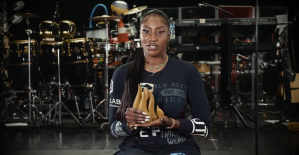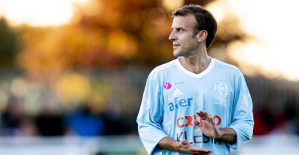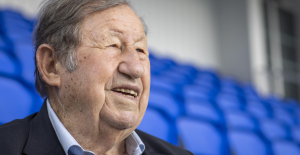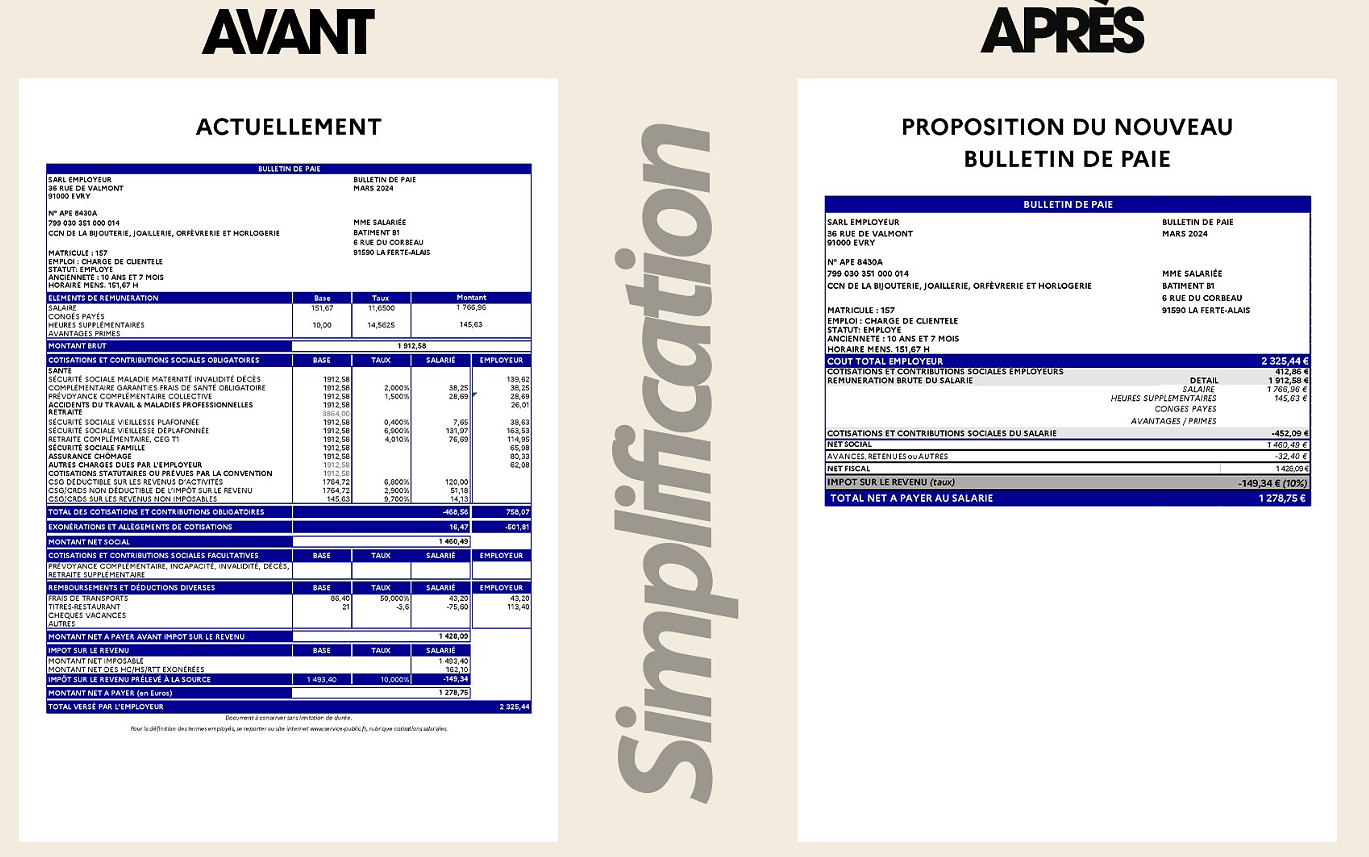Two lines on the quick test - boom, the two jogging rounds a week are over for now. But how do you return to training once the symptoms of the corona infection have subsided and the test is negative again?
The fact is: If you expect too much from your body too quickly, there is a risk of cardiac arrhythmias or heart muscle inflammation. So caution counts. Two sports physicians say what that can look like.
You first need to take a look at the theory: "A corona infection has two peaks," says Prof. Martin Halle. He is Medical Director of the Department of Preventive Sports Medicine and Sports Cardiology at the Technical University of Munich.
The virus enters the body and provokes a defensive reaction of the immune system - the first peak. A second phase follows around seven days later. Experts then speak of an “overshooting immune reaction”. The inflammation values, which can be measured in the blood, then rise again. Behind this are inflammatory processes that take place at the separating layer between the blood and the vessels - also in the lungs, in the heart, in other muscles.
The problem: "The test can be negative again at this point," says Martin Halle. "However, if you train for these high levels of inflammation, that is unfavorable." However, he has good news for everyone with sufficient vaccination protection: "The second phase is much weaker in vaccinated people than in unvaccinated people."
And another reason why you shouldn't go back on the run or in the CrossFit course too early: "There may still be sources of infection, so that the disease can recur due to excessive stress," says Prof. Bernd Wolfarth, chief physician in the sports medicine department at the Berlin Charité.
Incidentally, this applies not only to an infection with Covid-19, but also to other infections such as influenza.
Martin Halle gives the following rules of thumb: If you have had no or only slight symptoms, you should allow three symptom-free days to elapse before starting your first light training session. For somewhat stronger symptoms such as cough or fever, he advises waiting seven symptom-free days.
And if the infection really knocked you out – and your lungs or heart were also affected? Then it is best to have a doctor clarify how and when the sport will continue.
“Safety first” is Bernd Wolfarth's advice. "The more inexperienced athletes are, the more careful they should be." This is only possible if you put your body's signals ahead of your training plan. "First you have to get a feeling for it: How efficient is the body now?" says Bernd Wolfarth.
Not being able to pick up where you left off before the positive test is normal. "You lose a lot more performance through an infection than if you were on vacation on the beach during this time," says Martin Halle.
The sports doctor has a rule of thumb ready: Start with 50 percent of the workload that you stopped with before the infection. "If I've run ten kilometers before, I start with five kilometers."
"The best sports are those that are easy to control in terms of intensity and duration," advises Bernd Wolfarth. Means: The spinning class, which is designed for 60 minutes, is less suitable. A unit on the ergometer is better, where you can start with about 20 minutes of easy cycling.
By the way: Sports that don't put so much strain on the cardiovascular system are better suited for getting back into it. This can be the yoga or Pilates class - or strength training in the gym.
You have an advantage here if you follow your heart rate with a smartwatch or fitness tracker – and can compare the readings with those before the infection. "If you need a higher heart rate for the same intensity, that's a sign," Halle says.
Other warning signs are pressure on the chest, dizziness or an unsteady pulse, "an extra beat that you really feel," as Halle describes it. All of this can indicate heart muscle inflammation - reason enough to have a doctor check you up.
"It's also better to clarify shortness of breath, which occurs even with very little exertion," advises Wolfarth. Incidentally, this also applies if the shortness of breath only occurs after exercise – or a pronounced dry cough.

 His body naturally produces alcohol, he is acquitted after a drunk driving conviction
His body naturally produces alcohol, he is acquitted after a drunk driving conviction Who is David Pecker, the first key witness in Donald Trump's trial?
Who is David Pecker, the first key witness in Donald Trump's trial? What does the law on the expulsion of migrants to Rwanda adopted by the British Parliament contain?
What does the law on the expulsion of migrants to Rwanda adopted by the British Parliament contain? The shadow of Chinese espionage hangs over Westminster
The shadow of Chinese espionage hangs over Westminster Parvovirus alert, the “fifth disease” of children which has already caused the death of five babies in 2024
Parvovirus alert, the “fifth disease” of children which has already caused the death of five babies in 2024 Colorectal cancer: what to watch out for in those under 50
Colorectal cancer: what to watch out for in those under 50 H5N1 virus: traces detected in pasteurized milk in the United States
H5N1 virus: traces detected in pasteurized milk in the United States What High Blood Pressure Does to Your Body (And Why It Should Be Treated)
What High Blood Pressure Does to Your Body (And Why It Should Be Treated) “I’m interested in knowing where the money that the State takes from me goes”: Bruno Le Maire’s strange pay slip sparks controversy
“I’m interested in knowing where the money that the State takes from me goes”: Bruno Le Maire’s strange pay slip sparks controversy Despite the lifting of the controllers' strike, massive flight cancellations planned for Thursday, April 25
Despite the lifting of the controllers' strike, massive flight cancellations planned for Thursday, April 25 The right deplores a “dismal agreement” on the end of careers at the SNCF
The right deplores a “dismal agreement” on the end of careers at the SNCF The United States pushes TikTok towards the exit
The United States pushes TikTok towards the exit Saturday is independent bookstore celebration
Saturday is independent bookstore celebration In Paris as in Marseille, the Flames ceremony opens to fans of rap and hip-hop
In Paris as in Marseille, the Flames ceremony opens to fans of rap and hip-hop Sale of the century for a mysterious painting by Klimt, in Austria
Sale of the century for a mysterious painting by Klimt, in Austria Philippe Laudenbach, actor with more than a hundred supporting roles, died at 88
Philippe Laudenbach, actor with more than a hundred supporting roles, died at 88 Skoda Kodiaq 2024: a 'beast' plug-in hybrid SUV
Skoda Kodiaq 2024: a 'beast' plug-in hybrid SUV Tesla launches a new Model Y with 600 km of autonomy at a "more accessible price"
Tesla launches a new Model Y with 600 km of autonomy at a "more accessible price" The 10 best-selling cars in March 2024 in Spain: sales fall due to Easter
The 10 best-selling cars in March 2024 in Spain: sales fall due to Easter A private jet company buys more than 100 flying cars
A private jet company buys more than 100 flying cars This is how housing prices have changed in Spain in the last decade
This is how housing prices have changed in Spain in the last decade The home mortgage firm drops 10% in January and interest soars to 3.46%
The home mortgage firm drops 10% in January and interest soars to 3.46% The jewel of the Rocío de Nagüeles urbanization: a dream villa in Marbella
The jewel of the Rocío de Nagüeles urbanization: a dream villa in Marbella Rental prices grow by 7.3% in February: where does it go up and where does it go down?
Rental prices grow by 7.3% in February: where does it go up and where does it go down? Sale of Biogaran: The Republicans write to Emmanuel Macron
Sale of Biogaran: The Republicans write to Emmanuel Macron Europeans: “All those who claim that we don’t need Europe are liars”, criticizes Bayrou
Europeans: “All those who claim that we don’t need Europe are liars”, criticizes Bayrou With the promise of a “real burst of authority”, Gabriel Attal provokes the ire of the opposition
With the promise of a “real burst of authority”, Gabriel Attal provokes the ire of the opposition Europeans: the schedule of debates to follow between now and June 9
Europeans: the schedule of debates to follow between now and June 9 These French cities that will boycott the World Cup in Qatar
These French cities that will boycott the World Cup in Qatar Montpellier-Nantes: at what time and on which channel to watch the Ligue 1 match?
Montpellier-Nantes: at what time and on which channel to watch the Ligue 1 match? Ligue 1: Luis Enrique leaves many PSG players to rest in Lorient
Ligue 1: Luis Enrique leaves many PSG players to rest in Lorient Football: Deschamps, Drogba, Desailly... Beautiful people with Emmanuel Macron to play with the Variétés
Football: Deschamps, Drogba, Desailly... Beautiful people with Emmanuel Macron to play with the Variétés Football: “the referee was bought”, Guy Roux’s anecdote about a European Cup match… with watches and rubies
Football: “the referee was bought”, Guy Roux’s anecdote about a European Cup match… with watches and rubies


















